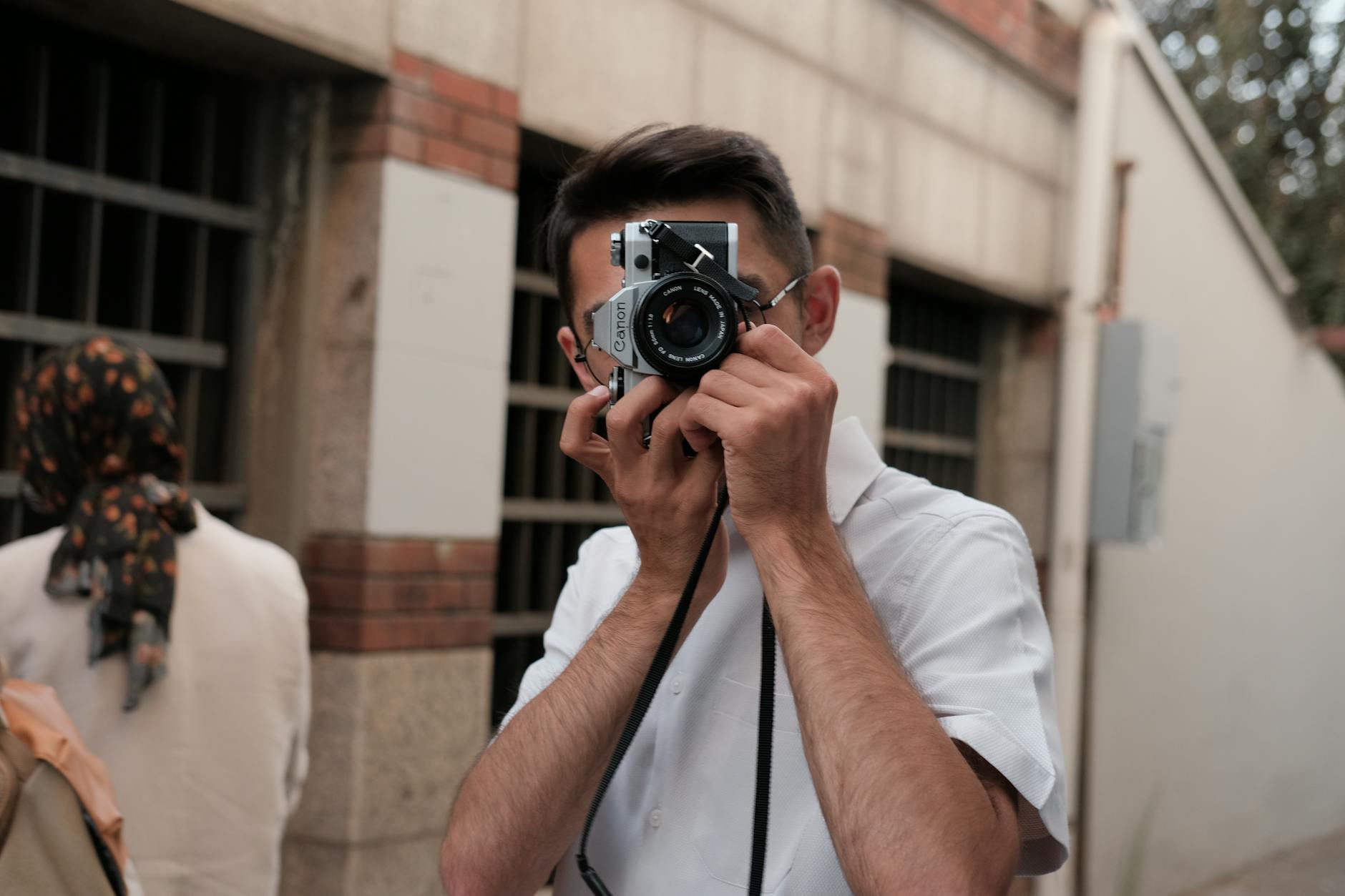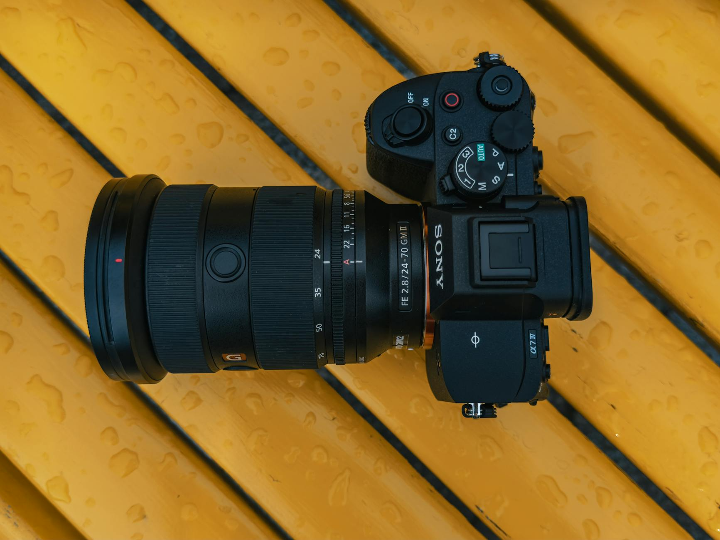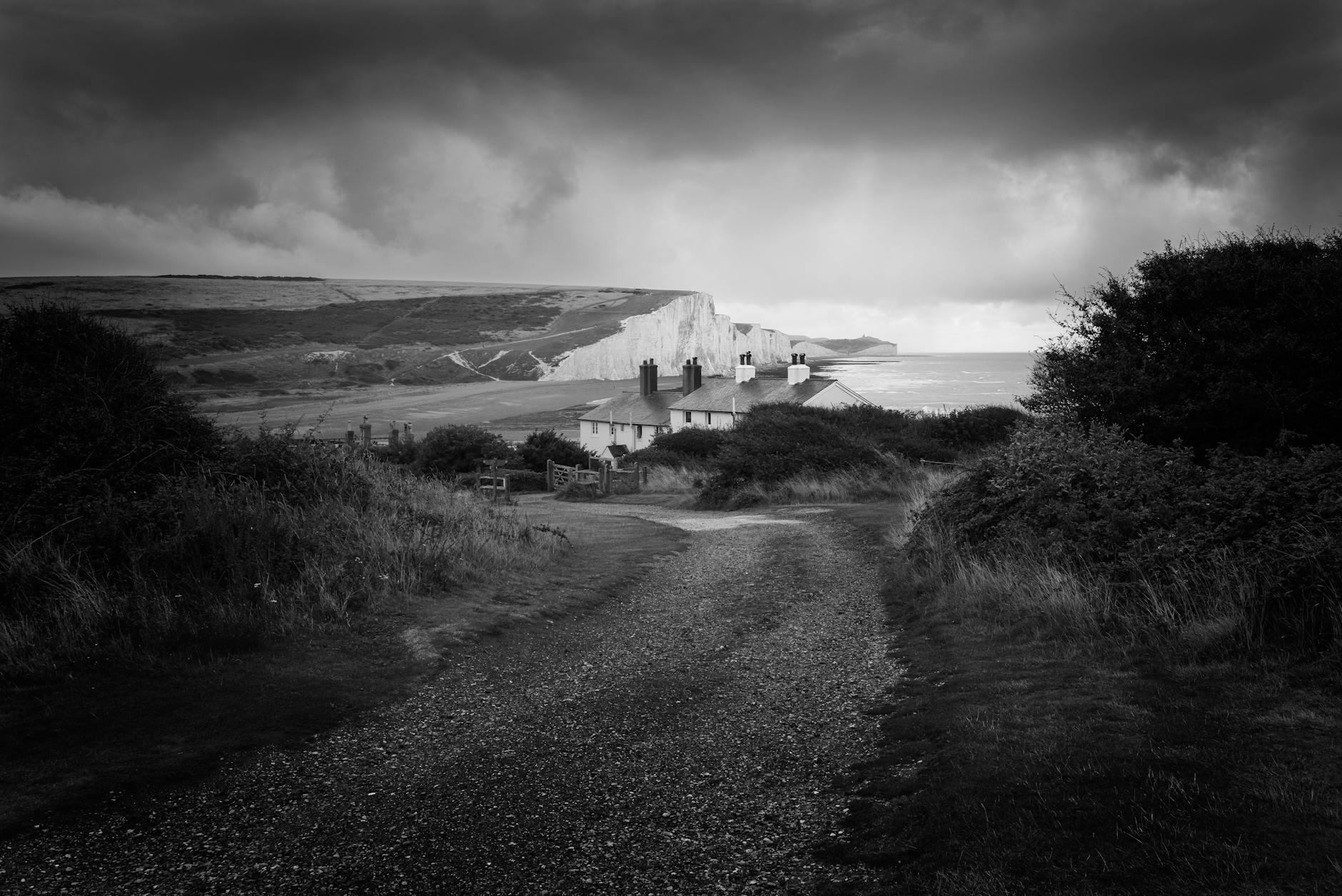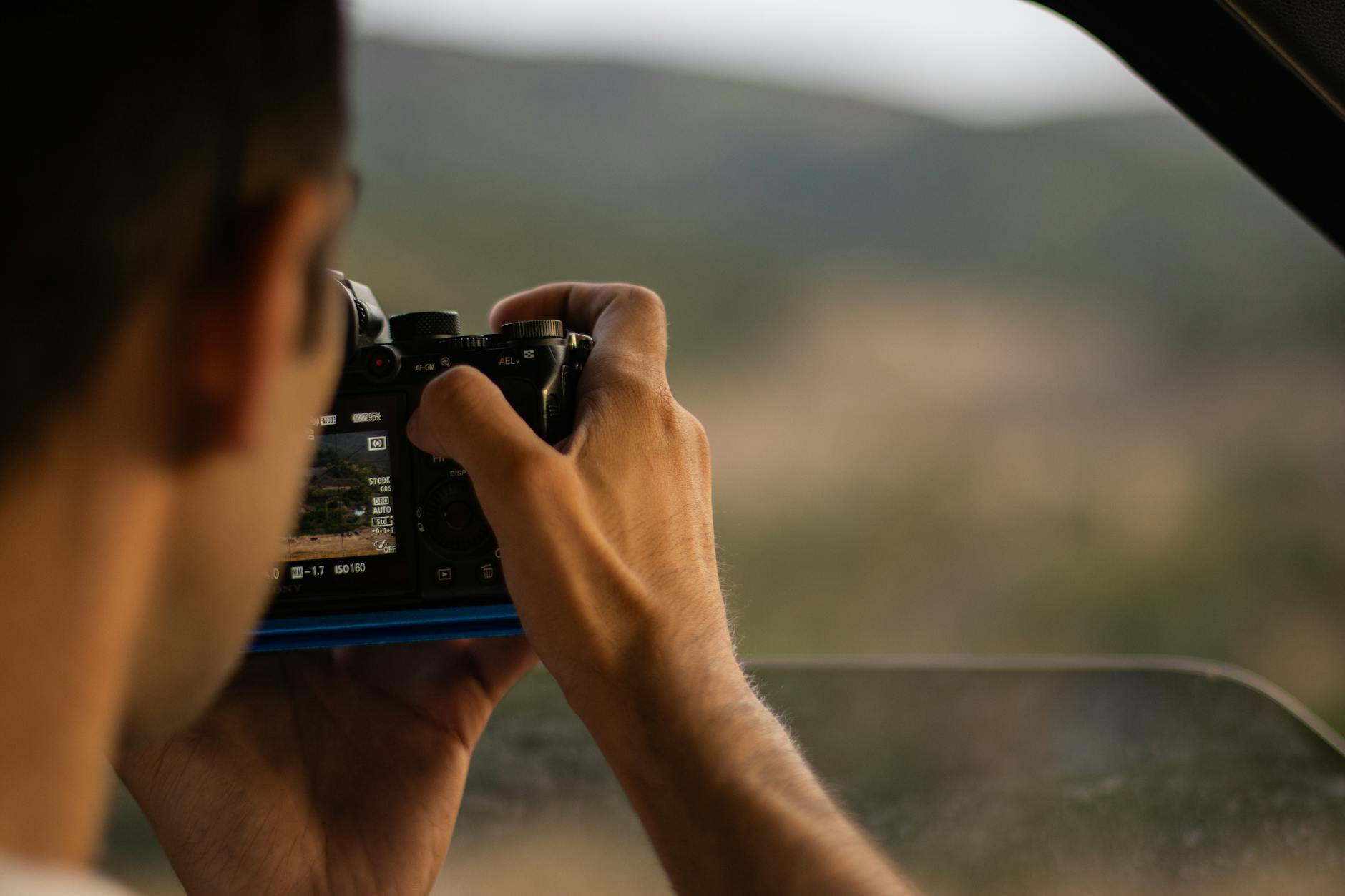Are you tired of taking photos that just don't pop? 📸 You're not alone! Even seasoned photographers sometimes fall into common traps that can turn a potentially stunning shot into a mediocre memory. Whether you're a beginner or an enthusiast, understanding these pitfalls is crucial to elevating your photography game.

From ignoring proper camera settings to rushing the perfect shot, there's a myriad of mistakes that can plague your photographic journey. But here's the good news: knowing is half the battle! By recognizing these top 5 photography mistakes, you're already on your way to capturing images that truly stand out. Ready to transform your photos from meh to marvelous? Let's dive into the most common photography blunders and, more importantly, learn how to avoid them like a pro! 🌟
Ignoring Proper Camera Settings

Now that we've introduced the top photography mistakes, let's dive into one of the most crucial aspects of taking great photos: mastering your camera settings. Many beginners and even some intermediate photographers often overlook the importance of properly configuring their camera, which can lead to subpar results. In this section, we'll explore the key camera settings you need to understand and optimize for stunning shots.
Mastering Shutter Speed for Motion Control
Shutter speed is a fundamental setting that can make or break your photos, especially when capturing moving subjects. It determines how long your camera's sensor is exposed to light and can dramatically affect the way motion is portrayed in your images.
Fast Shutter Speeds
- Use for freezing action and capturing sharp details in moving subjects
- Ideal for sports, wildlife, and fast-paced events
- Typically 1/500th of a second or faster
Slow Shutter Speeds
- Create motion blur and convey a sense of movement
- Perfect for light trails, waterfall photography, and creative effects
- Usually 1/30th of a second or slower
Shutter Speed | Effect | Ideal Subjects |
1/1000s or faster | Freeze fast action | Sports, birds in flight |
1/250s - 1/500s | Sharp images of moderate movement | People walking, slow-moving animals |
1/60s - 1/125s | Slight blur in moving subjects | Panning shots, gentle motion |
1/15s - 1/30s | Noticeable motion blur | Flowing water, light trails |
1s or longer | Extreme motion blur or light painting | Star trails, fireworks |
To avoid camera shake when using slower shutter speeds, remember to use a tripod or stable surface. As a general rule, when hand-holding your camera, your shutter speed should be at least 1/focal length of your lens to ensure sharp images.
Optimal ISO Settings for Image Quality
ISO is a crucial setting that determines your camera's sensitivity to light. While it can be tempting to crank up the ISO in low-light situations, it's essential to understand the trade-offs involved.
Low ISO (100-400)
- Produces the cleanest images with minimal noise
- Ideal for well-lit environments or when using a tripod
- Best for landscapes, portraits, and studio work
Medium ISO (800-1600)
- Balances image quality and light sensitivity
- Suitable for indoor photography or overcast outdoor conditions
- Good for events, street photography, and documentary work
High ISO (3200 and above)
- Allows shooting in very low light conditions
- Introduces noticeable noise and reduces image quality
- Use when necessary for night photography, concerts, or fast-action low-light scenarios
To optimize your ISO settings:
- Always start with the lowest ISO possible for the lighting conditions
- Increase ISO only when you can't achieve proper exposure with aperture and shutter speed adjustments
- Know your camera's noise performance at different ISO levels
- Consider using noise reduction software in post-processing for high ISO shots
Using the Right White Balance
White balance is often overlooked but plays a crucial role in color accuracy. Incorrect white balance can result in unnatural color casts that detract from your images.
Common White Balance Presets
- Auto: Generally reliable but can be inconsistent in mixed lighting
- Daylight: For outdoor shots in direct sunlight
- Cloudy: Adds warmth to compensate for the cooler light on overcast days
- Shade: Further warms the image for areas in shadow
- Tungsten: Cools down the warm glow of indoor incandescent lighting
- Fluorescent: Adjusts for the green cast of fluorescent lights
For more precise control, use a custom white balance setting:
- Photograph a white or gray card in your shooting environment
- Use this image to set a custom white balance in your camera
- This ensures accurate colors specific to your lighting conditions
Remember, if you shoot in RAW format, you can easily adjust white balance in post-processing without loss of quality. However, getting it right in-camera saves time and provides a better preview of your final image.
Understanding Aperture for Depth of Field
Aperture is not only crucial for controlling the amount of light entering your camera but also for managing depth of field – the range of distance in your image that appears acceptably sharp.
Wide Apertures (Low f-numbers: f/1.4, f/2.8, f/4)
- Create a shallow depth of field
- Ideal for portraits, isolating subjects from backgrounds
- Allow more light, enabling faster shutter speeds or lower ISO
Narrow Apertures (High f-numbers: f/11, f/16, f/22)
- Produce a deep depth of field
- Perfect for landscapes, architecture, and group shots
- Require more light, often necessitating slower shutter speeds or higher ISO
Aperture | Depth of Field | Light Gathering | Typical Uses |
f/1.4 - f/2.8 | Very shallow | Excellent | Portraits, low light |
f/4 - f/5.6 | Moderate | Good | General purpose |
f/8 - f/11 | Deep | Moderate | Landscapes, groups |
f/16 - f/22 | Very deep | Poor | Maximizing sharpness |
To effectively use aperture:
- Consider your subject and desired effect
- Be aware of the "sweet spot" of your lens (usually 2-3 stops down from wide open) for maximum sharpness
- Remember that extremely narrow apertures can introduce diffraction, slightly reducing overall image sharpness
Mastering these camera settings is crucial for avoiding common photography mistakes and producing high-quality images. By understanding and properly utilizing shutter speed, ISO, white balance, and aperture, you'll have greater control over your photography and be able to capture your vision more accurately.
As you become more comfortable with these settings, you'll find that adjusting them becomes second nature, allowing you to focus more on composition and creativity. Remember, practice is key – experiment with different combinations of settings to see how they affect your images in various situations.
Now that we've covered the importance of proper camera settings, let's move on to another critical aspect of photography: composition techniques. Understanding how to arrange elements within your frame can elevate your photos from good to great...
Poor Composition Techniques

Now that we've covered the importance of proper camera settings, let's delve into another crucial aspect of photography: composition techniques. Poor composition can ruin even the most technically perfect shot, while a well-composed image can elevate an otherwise ordinary scene into a captivating visual story.
A. Rule of Thirds for Balanced Images
The rule of thirds is a fundamental principle in photography that can dramatically improve your compositions. Imagine dividing your frame into a 3x3 grid, creating nine equal sections. The key is to place your main subject along these lines or at their intersections, rather than centering everything.
Here's why the rule of thirds works:
- Creates visual interest
- Adds balance to the image
- Guides the viewer's eye through the frame
- Allows for more dynamic compositions
To effectively use the rule of thirds:
- Place horizons along the top or bottom horizontal line
- Position vertical subjects along the left or right vertical lines
- Put points of interest at the intersections of these lines
Centered Composition | Rule of Thirds Composition
|
Static and predictable
| Dynamic and engaging
|
Viewer's eye stays in one spot | Eye moves around the frame
|
Can work for symmetrical subjects | Versatile for most subjects
|
Remember, while the rule of thirds is a powerful tool, it's not an unbreakable law. Sometimes, breaking this rule intentionally can lead to striking compositions. The key is to understand the rule first, then know when to apply or break it for maximum impact.
B. Leading Lines to Guide the Viewer's Eye
Leading lines are an essential compositional technique that can add depth and guide the viewer's eye through your image. These lines can be straight, curved, or even implied, and they serve to draw attention to your main subject or create a sense of movement within the frame.
Types of leading lines:
- Natural lines (rivers, roads, tree branches)
- Architectural lines (buildings, bridges, fences)
- Man-made lines (train tracks, power lines)
- Implied lines (gaze direction of people or animals)
To effectively use leading lines:
- Identify strong lines in your scene
- Use these lines to lead towards your main subject
- Experiment with different angles to emphasize the lines
- Consider using diagonal lines for a more dynamic composition
Leading lines not only guide the viewer's eye but also create a sense of depth and perspective in your images. They can transform a flat, two-dimensional photograph into a more immersive, three-dimensional experience.
C. Framing Subjects Effectively
Framing is a powerful compositional technique that involves using elements within the scene to create a natural border around your main subject. This technique not only draws attention to your subject but also adds depth and context to your images.
Benefits of effective framing:
- Isolates and emphasizes the main subject
- Adds layers and depth to the composition
- Creates a sense of place and context
- Can hide distracting elements in the scene
Examples of natural frames:
- Archways and doorways
- Tree branches and foliage
- Windows and mirrors
- Rock formations or cave openings
To master the art of framing:
- Look for natural frames in your environment
- Experiment with partial frames (they don't need to surround the entire subject)
- Use contrasting colors or light to make your frame stand out
- Consider the relationship between the frame and the subject
Remember, framing doesn't always have to be obvious or complete. Sometimes, subtle or partial framing can be just as effective in guiding the viewer's eye and creating a compelling composition.
D. Avoiding Cluttered Backgrounds
A cluttered background can be a major distraction in your photographs, drawing attention away from your main subject. Learning to manage and simplify your backgrounds is crucial for creating clean, impactful images.
Strategies for dealing with cluttered backgrounds:
- Change your position or angle
- Use a wider aperture for shallow depth of field
- Fill the frame with your subject
- Use a simple, contrasting background
Here's a comparison of different background management techniques:
Technique | Pros | Cons
|
Changing position | No special equipment needed | May limit composition options
|
Wide aperture
| Creates pleasing bokeh | Requires fast lenses, can be expensive
|
Filling the frame
| Emphasizes subject details
| May lose context of the environment
|
Simple background
| Clean, professional look
| May require scouting or setup time
|
Tips for avoiding cluttered backgrounds:
- Be aware of your surroundings and what's behind your subject
- Look for clean, simple backgrounds like walls, sky, or water
- Use contrasting colors to make your subject stand out
- Consider the distance between your subject and the background
By mastering these composition techniques – the rule of thirds, leading lines, effective framing, and background management – you'll be well on your way to creating more visually appealing and impactful photographs. Remember, composition is as much about what you leave out of the frame as what you include. It's about guiding the viewer's eye and telling a story through your images.
As you practice these techniques, you'll develop an intuitive sense of what works best for different subjects and scenes. Don't be afraid to experiment and break the rules occasionally – sometimes, the most striking images come from unexpected compositions.
Now that we've explored the importance of composition, let's move on to another critical aspect of photography: proper focus. Ensuring your images are sharp and your subjects are in focus is crucial for creating professional-looking photographs.
Neglecting Proper Focus

Now that we've covered composition techniques, let's dive into another critical aspect of photography that many beginners and even some experienced photographers struggle with: focusing. Proper focus can make or break an image, turning a potentially stunning shot into a disappointing blur. In this section, we'll explore various focusing techniques and strategies to ensure your images are always tack-sharp.
Manual Focus Techniques for Precision
While autofocus technology has come a long way, there are still situations where manual focus reigns supreme. Mastering manual focus can give you unparalleled control over your images and help you achieve the exact result you're envisioning.
When to Use Manual Focus
- Low-light situations
- Macro photography
- Landscape photography (for maximum depth of field)
- Portraits (to ensure focus on the eyes)
- Creative shots with intentional blur
Tips for Effective Manual Focusing
- Use Live View: Many modern cameras offer a live view feature that allows you to zoom in on your subject for precise focusing.
- Focus Peaking: This feature highlights in-focus areas, making it easier to determine sharpness.
- Tripod Usage: A stable platform can significantly improve your manual focusing accuracy.
- Practice Zone Focusing: Pre-focus your lens to a specific distance for quick street photography shots.
Technique | Pros | Cons
|
Live View | Precise, works well in low light | Drains battery faster
|
Focus Peaking | Quick, visual confirmation | Not available on all cameras
|
Tripod Usage | Stability, reduces camera shake | Less mobility, setup time
|
Zone Focusing | Fast, great for street photography | Requires practice, less precise
|
Choosing the Right Autofocus Mode
Modern cameras offer a variety of autofocus modes, each designed for specific shooting scenarios. Understanding these modes and when to use them can significantly improve your focus accuracy.
Common Autofocus Modes
- Single-Shot AF (AF-S): Best for stationary subjects
- Continuous AF (AF-C): Ideal for moving subjects
- Auto AF (AF-A): Switches between AF-S and AF-C based on subject movement
- Face/Eye Detection AF: Perfect for portraits and people photography
Autofocus Area Modes
- Single-point AF: Precise control over focus point
- Dynamic-area AF: Tracks moving subjects within a specific area
- 3D-tracking AF: Uses color information to track subjects across the frame
- Auto-area AF: Camera selects focus points automatically
To choose the right autofocus mode, consider the following factors:
- Subject movement: Is your subject stationary or in motion?
- Composition: Do you need precise control over the focus point?
- Lighting conditions: Low light may require more advanced AF features
- Type of photography: Different genres may benefit from specific AF modes
Here's a quick guide to help you choose:
| Scenario | Recommended AF Mode | Reason
|
Portraits | Single-Shot AF with Face/Eye Detection
| Ensures sharp focus on the subject's eyes
|
Sports
| Continuous AF with Dynamic-area AF
| Tracks moving subjects effectively
|
Landscapes
| Single-Shot AF with Single-point AF
| Allows precise focus on key elements
|
Street Photography
| Auto AF with Auto-area AF
| Adapts to various situations quickly
|
Focus Stacking for Maximum Sharpness
Focus stacking is an advanced technique that combines multiple images taken at different focus points to create a single image with extended depth of field. This technique is particularly useful in macro photography and landscape photography where achieving front-to-back sharpness can be challenging.
How Focus Stacking Works
- Set up your camera on a tripod
- Take multiple shots of the same scene, adjusting the focus point slightly for each shot
- Use software to blend the images, selecting the sharpest areas from each frame
Focus Stacking Steps
- Choose your composition and set up your camera on a tripod
- Set your camera to manual focus mode
- Take your first shot with the focus point on the nearest part of your subject
- Gradually adjust the focus towards the background, taking shots at each focus point
- Ensure you have enough overlap between focus points to avoid gaps in sharpness
- Use software like Photoshop, Helicon Focus, or Zerene Stacker to blend the images
Benefits of Focus Stacking
- Achieve front-to-back sharpness in macro photography
- Create ultra-sharp landscape images with near and far elements in focus
- Overcome depth of field limitations of wide apertures
- Produce unique creative effects by selectively blending focus areas
Challenges and Considerations
- Time-consuming process, both in shooting and post-processing
- Requires a stable shooting platform (tripod)
- Not suitable for moving subjects
- May require specialized software for best results
To help you decide when to use focus stacking, consider this comparison:
Technique
| Best For
| Limitations
|
Single Shot
| Quick captures, moving subjects
| Limited depth of field
|
Small Aperture
| Increased depth of field
| Potential diffraction, longer exposures
|
Focus Stacking
| Maximum sharpness, macro, landscapes
| Time-consuming, requires post-processing
|
By mastering these focusing techniques – manual focus, autofocus modes, and focus stacking – you'll be well-equipped to capture tack-sharp images in any situation. Remember, practice is key to improving your focusing skills. Experiment with different techniques and don't be afraid to push your boundaries.
Next, we'll explore another crucial aspect of photography that can make or break your images: lighting management. Understanding how to work with different lighting conditions will take your photography to the next level and help you avoid common mistakes.
Inadequate Lighting Management

Now that we've covered the importance of proper focus, let's dive into another crucial aspect of photography: lighting management. Mastering light is essential for creating stunning images, and inadequate lighting can ruin even the most well-composed shots. In this section, we'll explore various techniques to help you harness the power of light and elevate your photography skills.
Utilizing Natural Light Effectively
Natural light is often the most flattering and versatile light source available to photographers. Here are some tips to make the most of it:
- Golden Hour: Take advantage of the soft, warm light during the first and last hour of daylight. This period produces a beautiful, diffused glow that's perfect for portraits and landscapes.
- Overcast Days: Don't shy away from shooting on cloudy days. The cloud cover acts as a giant diffuser, creating even lighting that's ideal for outdoor portraits and reducing harsh shadows.
- Window Light: When shooting indoors, position your subject near a window to utilize the soft, directional light. This technique works wonders for still life, food photography, and indoor portraits.
- Backlighting: Experiment with placing your subject between the camera and the light source. This creates a beautiful rim light effect and can add drama to your images.
- Shade: On bright, sunny days, seek out shaded areas to avoid harsh shadows and overexposure. The soft, even light in the shade can produce stunning results.
Proper Use of Flash and Artificial Lighting
While natural light is excellent, there are times when artificial lighting becomes necessary. Here's how to use it effectively:
- On-Camera Flash: When using your camera's built-in flash, diffuse it with a small piece of white tissue or a dedicated flash diffuser to soften the light and reduce harsh shadows.
- Off-Camera Flash: For more control and creativity, invest in an external flash unit. This allows you to position the light source independently of the camera, creating more dynamic lighting setups.
- Continuous Lighting: LED panels or softboxes provide constant illumination, making it easier to visualize your lighting setup before taking the shot. They're particularly useful for video work and still life photography.
- Studio Strobes: For professional-level control, consider using studio strobes. These powerful lights offer precise control over intensity and direction, allowing for complex lighting setups.
Here's a comparison of different artificial lighting options:
| Lighting Type | Pros
| Cons
| Best Use Cases
|
On-Camera Flash
| Portable, Always available
| Harsh light, Limited control
| Emergency situations, Fill light
|
Off-Camera Flash
| Versatile, Portable
| Requires additional gear, Learning curve
| Portraits, Events, Creative lighting
|
Continuous Lighting
| Easy to visualize, Good for video
| Less powerful than strobes, Can be hot
| Product photography, Video, Beginners
|
Studio Strobes
| Powerful, Precise control
| Expensive, Less portable
| Professional studio work, High-end portraits
|
Avoiding Harsh Shadows and Overexposure
Harsh shadows and overexposed areas can detract from your images. Here are some techniques to manage these issues:
- Diffuse the Light: Use sheer curtains, a white sheet, or a dedicated diffuser to soften harsh sunlight or artificial light sources.
- Fill Shadows: Use a reflector or a fill light to bounce light into shadowy areas, reducing the contrast between highlights and shadows.
- HDR Techniques: In high-contrast scenes, consider taking multiple exposures and blending them in post-processing to capture details in both highlights and shadows.
- Use the Histogram: Learn to read your camera's histogram to ensure you're not clipping highlights or shadows. Adjust your exposure accordingly.
- Graduated Neutral Density Filters: These filters can help balance exposure in landscape photography, especially when dealing with bright skies and darker foregrounds.
Enhancing Photos with Reflectors and Diffusers
Reflectors and diffusers are affordable and versatile tools that can significantly improve your lighting. Here's how to use them effectively:
- Types of Reflectors:
- Silver: Increases contrast and adds a cooler tone
- Gold: Adds warmth to the image, great for sunset-like effects
- White: Provides soft, neutral fill light
- Black: Absorbs light, creating negative fill for added contrast
- Using Reflectors:
- Position the reflector opposite your main light source to fill in shadows
- Experiment with different angles to achieve the desired effect
- Use multiple reflectors for more complex lighting setups
- Types of Diffusers:
- Shoot-through umbrellas
- Softboxes
- Scrims or diffusion panels
- Using Diffusers:
- Place the diffuser between your light source and the subject to soften harsh light
- Adjust the distance between the diffuser and the light source to control the softness of the light
- Use larger diffusers for a more even spread of light
- DIY Options:
- Make a simple reflector using foam core board or a large piece of white cardboard
- Create a diffuser by stretching a white bed sheet over a frame
By mastering these lighting techniques, you'll be well-equipped to handle various lighting situations and create stunning images. Remember that lighting is not just about technical proficiency; it's also about creativity and experimentation. Don't be afraid to try new approaches and push the boundaries of your lighting skills.
As you become more comfortable with lighting management, you'll find that it becomes an integral part of your photographic vision. The ability to see and shape light will not only help you avoid common mistakes but also enable you to create images that truly stand out.
As we move forward, we'll explore another crucial aspect of photography that can make or break your images: post-processing. Understanding how to effectively edit your photos can help you recover from minor shake issues and enhance the overall quality of your work.
Poor Post-Processing

Now that we've covered the importance of proper camera settings and techniques in the field, let's delve into a crucial aspect of photography that often makes or breaks an image: post-processing. Many photographers, especially beginners, fall into the trap of poor post-processing, which can diminish the quality of their otherwise well-captured images. In this section, we'll explore three common post-processing mistakes and provide guidance on how to avoid them.
A. Over-Editing: Maintaining Natural Looks
One of the most prevalent post-processing mistakes is over-editing, which can lead to unnatural-looking images that fail to resonate with viewers. While editing tools offer a myriad of possibilities, it's essential to exercise restraint and maintain the natural essence of your photographs.
Common Over-Editing Pitfalls:
- Excessive saturation
- Unrealistic HDR effects
- Overuse of clarity and sharpening
- Extreme color manipulation
- Overdone skin smoothing in portraits
To avoid these pitfalls, consider the following tips:
- Start with a light touch: Begin with subtle adjustments and gradually increase intensity if necessary.
- Take breaks: Step away from your editing session and return with fresh eyes to assess your work objectively.
- Compare before and after: Frequently toggle between your original and edited versions to ensure you're enhancing, not distorting, the image.
- Seek feedback: Share your work with trusted peers or mentors for constructive criticism.
Editing Aspect
| Subtle Approach
| Over-Edited Approach
|
Saturation
| +10-20%
| +50% or more
|
Contrast
| +10-15
| +30 or more
|
Clarity
| +10-20
| +50 or more
|
Sharpening
| 25-50
| 100 or more
|
Remember, the goal of post-processing is to enhance your images, not to create an entirely new reality. Strive for a balance between improvement and authenticity.
B. Inconsistent Editing Style
Another common post-processing mistake is inconsistency in editing style, particularly when working with a series of images or developing a personal brand. Consistency in your editing approach helps create a cohesive portfolio and establishes your unique photographic voice.
Ways to Maintain Consistency:
- Develop presets: Create and use custom presets that align with your style for efficient and consistent editing.
- Establish a workflow: Follow a systematic approach to editing, addressing aspects like exposure, color, and sharpening in a consistent order.
- Use reference images: Keep sample images that exemplify your desired style as a guide during editing.
- Limit your tools: Focus on mastering a core set of editing tools rather than constantly experimenting with new effects.
- Color grading: Develop a consistent color palette that complements your photographic style.
To further illustrate the importance of consistency, let's examine how it applies to different photography genres:
Genre
| Consistency Considerations
|
Landscape
| Consistent color grading, similar contrast and saturation
|
Portrait
| Uniform skin tones, consistent background treatment
|
Wedding
| Cohesive look across entire album, matching white balance
|
Product
| Consistent lighting and background, uniform color accuracy
|
Street
| Similar contrast and grain, consistent color or B&W treatment
|
By maintaining a consistent editing style, you not only improve the overall quality of your work but also make your images more recognizable and memorable to your audience.
C. Ignoring RAW Potential
One of the most significant post-processing mistakes is failing to harness the full potential of RAW files. Many photographers, especially beginners, opt to shoot in JPEG format for convenience, unaware of the vast editing possibilities they're sacrificing.
Benefits of Shooting and Editing in RAW:
- Greater dynamic range: RAW files contain more information in highlights and shadows, allowing for better recovery of details in post-processing.
- White balance flexibility: Unlike JPEGs, RAW files allow you to adjust white balance without quality loss.
- Non-destructive editing: RAW editing is non-destructive, meaning you can always revert to the original file.
- Higher bit depth: RAW files typically have 12 or 14-bit color depth, compared to JPEG's 8-bit, providing smoother tonal transitions.
- Better noise reduction: RAW files offer more effective noise reduction capabilities during post-processing.
To illustrate the difference between RAW and JPEG editing potential, consider this comparison:
Editing Aspect
| RAW Potential
| JPEG Limitation
|
Exposure Adjustment
| ±2-3 stops without quality loss
| ±0.5-1 stop before visible artifacts
|
White Balance
| Full adjustment range
| Limited adjustment without color shift
|
Highlight Recovery
| Significant recovery possible
| Limited to no recovery
|
Shadow Detail
| Extensive detail retrieval
| Limited shadow lifting
|
Color Depth
| 12-14 bit (4096-16384 levels)
| 8 bit (256 levels)
|
To fully leverage RAW potential:
- Always shoot in RAW format when possible.
- Invest time in learning RAW processing software like Adobe Camera Raw, Lightroom, or Capture One.
- Develop a RAW processing workflow that addresses exposure, white balance, and tonal adjustments before moving to more creative edits.
- Experiment with different RAW converters to find the one that best suits your needs and style.
- Regularly update your RAW processing software to benefit from improvements in demosaicing algorithms and new features.
By embracing RAW processing, you'll unlock a new level of control over your images, allowing for more refined and professional results.
As we conclude our discussion on post-processing mistakes, it's important to remember that editing is a skill that develops over time. Don't be discouraged if your early attempts don't meet your expectations. With practice, patience, and a commitment to learning, you'll soon find yourself creating beautifully edited images that truly showcase your photographic vision.
Conclusion

Mastering photography is a journey of continuous learning and improvement. By being aware of these common mistakes - from poor composition and improper camera settings to neglecting proper focus and overlooking important details - you can significantly enhance the quality of your photographs. Remember, every great photographer started as a beginner, and learning from these mistakes is an essential part of growth.
As you continue your photographic journey, focus on developing your technical skills while nurturing your creative vision. Practice regularly, experiment with different techniques, and don't be afraid to make mistakes - they're valuable learning opportunities. With patience, persistence, and a keen eye for improvement, you'll soon find yourself capturing stunning images that truly reflect your unique perspective and style.